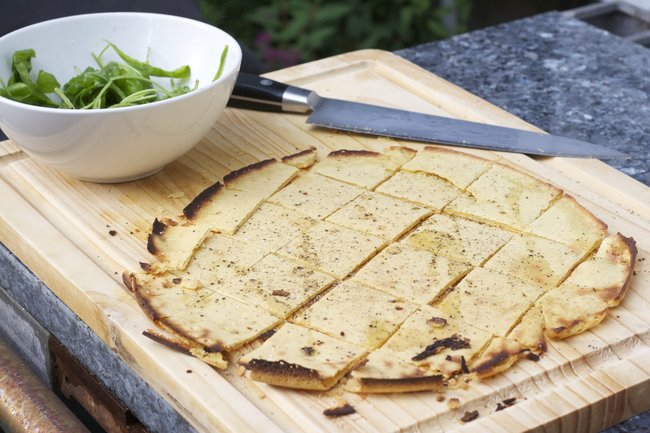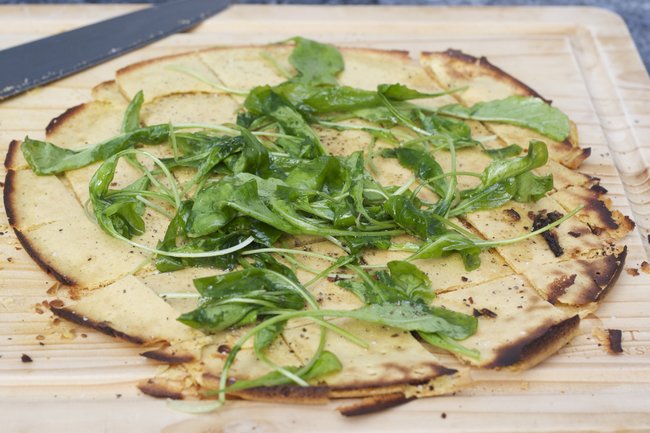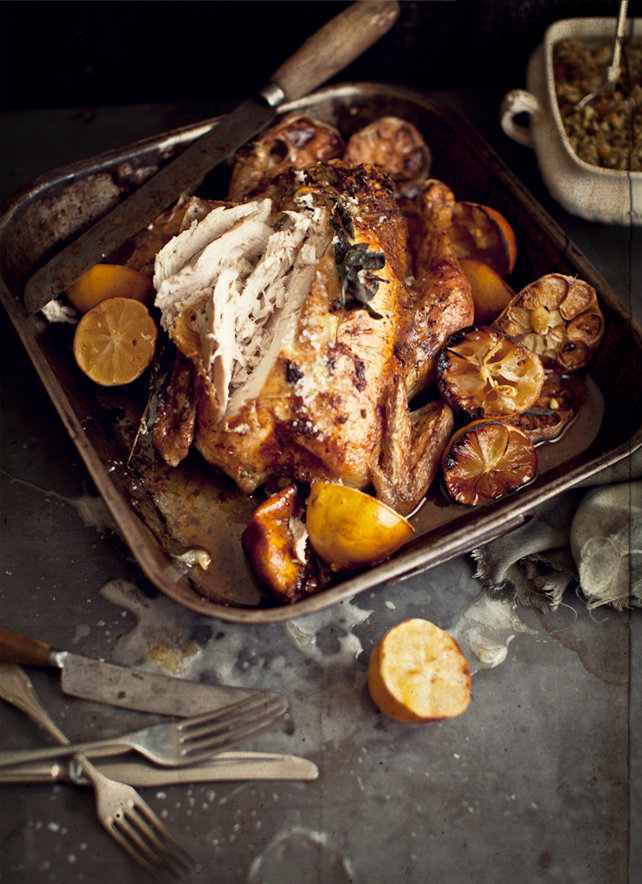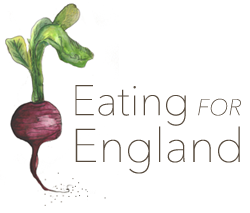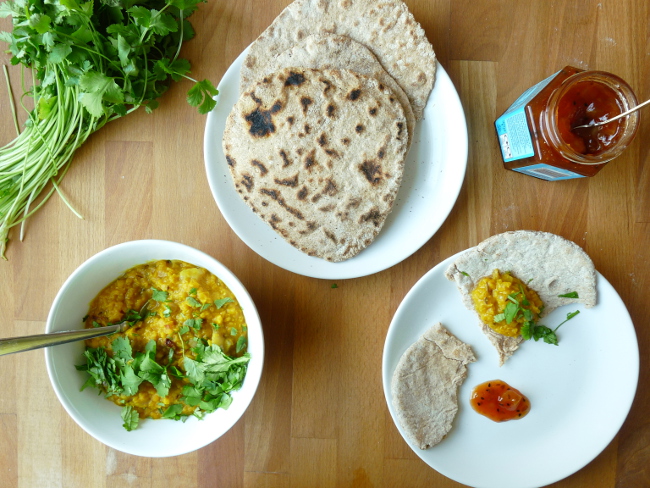
My goal with sharing recipes on this blog has always been to focus on simple dishes. I’m happiest making and eating fresh, simple, and (mostly) healthy meals and I like sharing how easy that can be to achieve. There are beautiful blogs out there which will guide you through making complex recipes and which challenge and push boundaries. I don’t think I’m pushing any boundaries here, except to offer a (currently) meat and dairy-free approach to cooking that focuses on whole food, plant-based recipes.
It’s easy to fall into the trap of thinking that cooking from scratch has to mean time spent frantically dashing around the kitchen trying to whip up something chef-fy and impressive. I think there’s a chance that rather than encouraging people to cook, the current glut of competitive cooking shows on TV only alienates us normal folk and makes cooking delicious food at home seem impossibly complicated and unachievable.
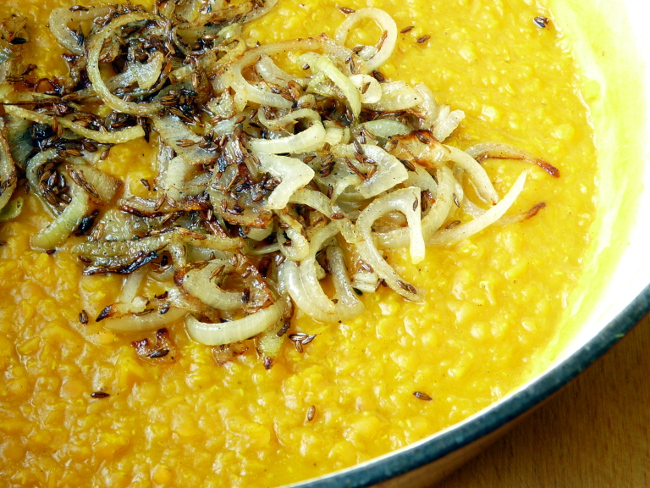
We don’t spend a huge amount of money on food – we’re on a budget and I like the challenge of making delicious meals without spending a lot. We do buy mostly organic produce although the fact that I don’t eat meat or dairy has shrunk our food spending massively. Organic fruit and vegetables certainly come at a price, but it’s nothing compared to meat and dairy, organic or not.
I also don’t have a huge amount of time to spend cooking most days. If I’m lucky, after work there’s an hour available to make something before it’s so late that only toast is practical. At the weekends, more often than not we prefer to be out in the world, exploring this new city rather than hunkered down.
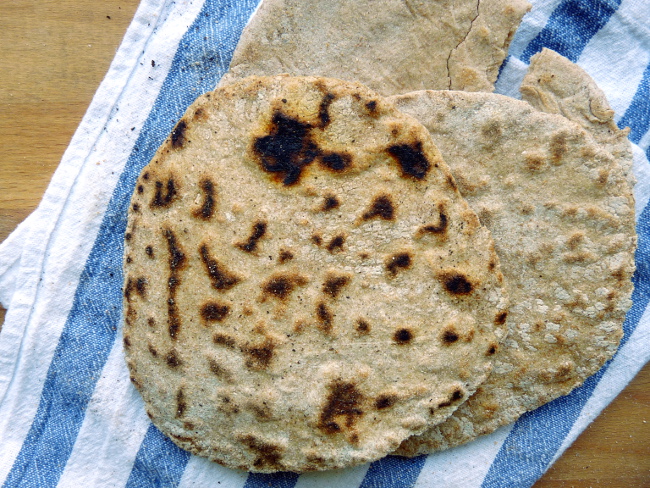
So, inexpensive, simple, quick, and nutritious are my priorities these days and this dal and homemade chapati fall squarely into those categories. Many people assume you need a full cabinet of spices to make good Indian food but this dish is here to prove that theory wrong.
Dal is an excellent dish to make on a budget, requiring only red lentils, water, turmeric, an onion, and cumin seeds. You can’t really get more thrifty or simple than that and yet it packs an almighty flavour punch. Chapati also requires minimal ingredients to create soft, chewy, earthy-tasting, and perfectly charred breads that are lovely alone but perfect with a little chutney spread on them to scoop up dal. Since they require no rise, they are completely practical for a weeknight dinner too. Being lighter than their cousin, naan bread, I find that I can also eat more of them, which is one distinct bonus in my book.
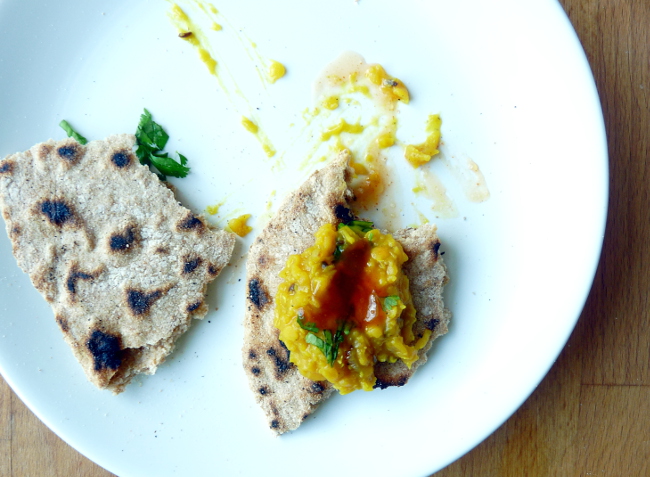
Simple Dal
from River Cottage Veg
Ingredients
- 250g / 1 ⅓ cups red lentils
- 1 tsp ground turmeric
- 3/4 tsp sea salt
- 2 tbsp sunflower oil
- 1 tsp cumin seeds
- 1 onion, halved and thinly sliced
- a small bunch of parsley or fresh coriander (cilantro), coarsely chopped
Directions
- Put the lentils in a saucepan with 800ml (3.5 cups) water and bring to a boil. Skim off any scum, then stir in the turmeric and salt. Lower the heat and simmer, uncovered for about 15 minutes, whisking vigorously occasionally. The lentils should break down and have the consistency of thick puréed soup. Keep warm in the pan.
- When the dal is just about done, heat the oil in a frying pan over medium heat. Add the cumin seeds and fry for a couple of minutes, until browned and fragrant. Add the onion and fry quite briskly for 5-10 minutes until golden brown, with some crispy edges.
- Tip the onion mixture into the hot lentils in the pan, cover and leave for 5 minutes, then stir them into the dal. Taste and adjust the seasoning as necessary. Serve with fresh parsley or cilantro on top and homemade chapati on the side.
Homemade Chapati (Indian Flatbread)
adapted from Saveur
Notes
If you can find chapati flour, by all means, use that. It’s a finely milled whole durum wheat flour called atta in Hindi. I used an organic wholemeal flour which turned out really well.
Ingredients
- 240g / 2 cups organic plain wholemeal flour
- 1 tbsp kosher salt
- 1 tbsp organic canola oil
- 250ml / 1 cup water
Directions
- Whisk together the flour, salt, oil, and water in a bowl until dough forms. Transfer to a work surface and knead until smooth, for about 4 minutes. Cover with a tea towel and let the dough sit for about an hour.
- Divide dough into 10 equal pieces and shape each piece into a ball. Using a rolling pin, roll each ball into a 12cm / 5″ round. Try to maintain a circular shape, but it doesn’t have to be perfect.
- Heat a dry cast-iron skillet or frying pan over high heat. Add a dough round and cook for about a minute before turning once, until cooked through and charred in spots, about 2 minutes.
- Transfer to a plate and repeat with remaining rounds. Serve hot. Makes 10 flatbreads.
